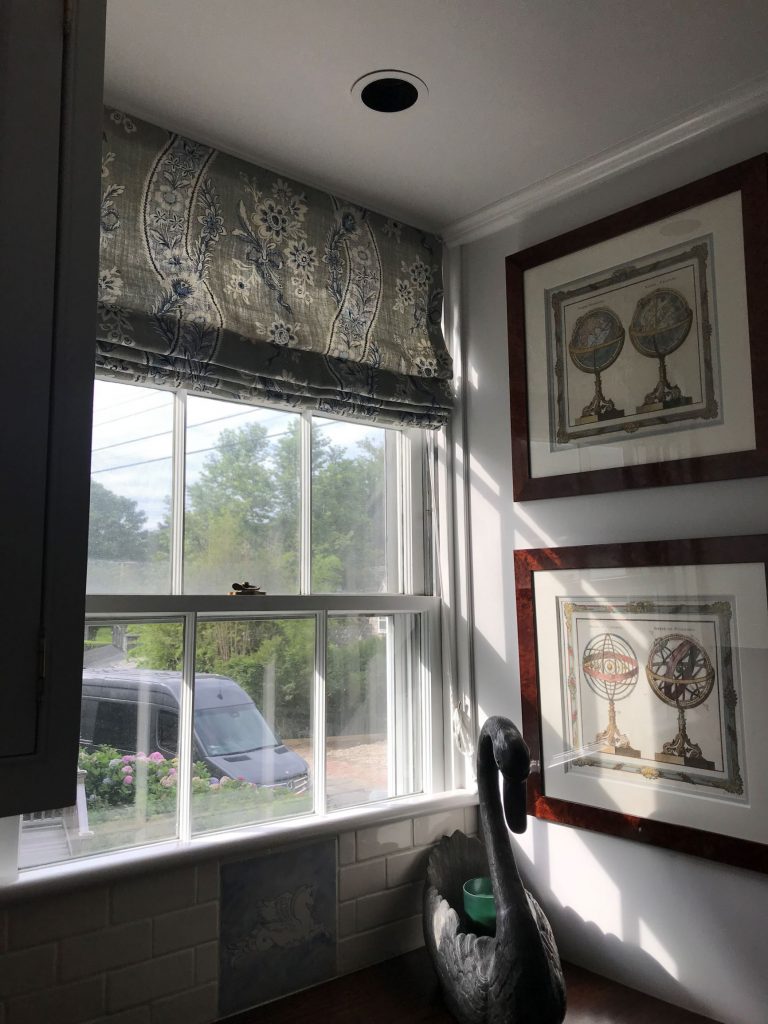Historic windows with their old wavy glass are like a work of art. The aesthetic quality of old windows is seldom addressed in arguments we hear about repairing and maintaining historic windows. Did you know that the bubbles in old glass mark a breath taken by the glassmaker?
Around Nantucket and across the country, historic windows are disappearing at an alarming rate, victims of often needless and very costly replacements. There is a mistaken notion, happily promoted by the new-window industry, that decades-old windows cannot or should not be repaired, and that replacing them with new energy-efficient windows is the “green” thing to do.
Nothing could be further from the truth.

Why do we jump to the conclusion that 100- or 200-year-old windows need replacing? After all, they have proven to be the ultimate survivors and, like a Chippendale chest of drawers or a very fine pair of shoes, were designed to last and be repaired.
Almost all pre-1940 window frames were built of high-quality, dense wood in easy-to-assemble parts and can last for generations, if they are maintained and repaired. Maintenance of old windows generally involves simply keeping them painted and, from time to time, reglazing.
Repair is relatively simple, too, and should follow the path of the true reservationists: “do as little as needed.” If a pane is cracked and needs replacement, remove the old glazing, tap out the broken pane, insert a new one, and reglaze and paint. (If you like, old-style glass with bubbles is available.) If window muntins—the wooden bars between panes of glass—are in poor condition, a window craftsman (call us to help you find one) can replace the failing element with one that will last a lifetime.
Nothing is greener than preserving. Manufacturing replacement windows is highly energy intensive, and often involves long-distance shipping that uses even more precious natural resources. Keep the job local by hiring someone on island to repair them. Replacement windows do live up to their name, however, because they are not built to be repaired; they often need to be replaced only a few years after they were installed.
What about energy efficiency? Studies show that it would take many years to recoup the cost of replacement windows through energy savings—often longer than the life of the replacements themselves.
Simple steps can make historic windows much more energy efficient, including weather-stripping, sealing and caulking, and adding insulation within the casing. Interior and exterior storm windows also help considerably. Taken together, these measures have been shown to equal, and in some cases beat, the efficiency of replacement windows. And, when the energy consumed to manufacture and deliver replacement windows is factored in, saving historic windows is clearly the better choice.
Don’t just take our word for it; there are many excellent sources that demonstrate the benefits of preserving historic windows. We have listed some of them for your further study:
More Resources
For those who want to take a hands-on approach, consider a window-repair course. The North Bennet Street School in Boston’s North End holds a short course on proper window repair through its Preservation Carpentry program. Scholarships are available for this course for Nantucket contractors and tradesmen through the NPT. Contact our office for more details or visit the NBSS website at www.nbss.org.
The Repair of Historic Wooden Windows
This Preservation Brief from the National Parks Service provides more in-depth information on physical evaluation of windows, types of repair, weatherization, and more.


